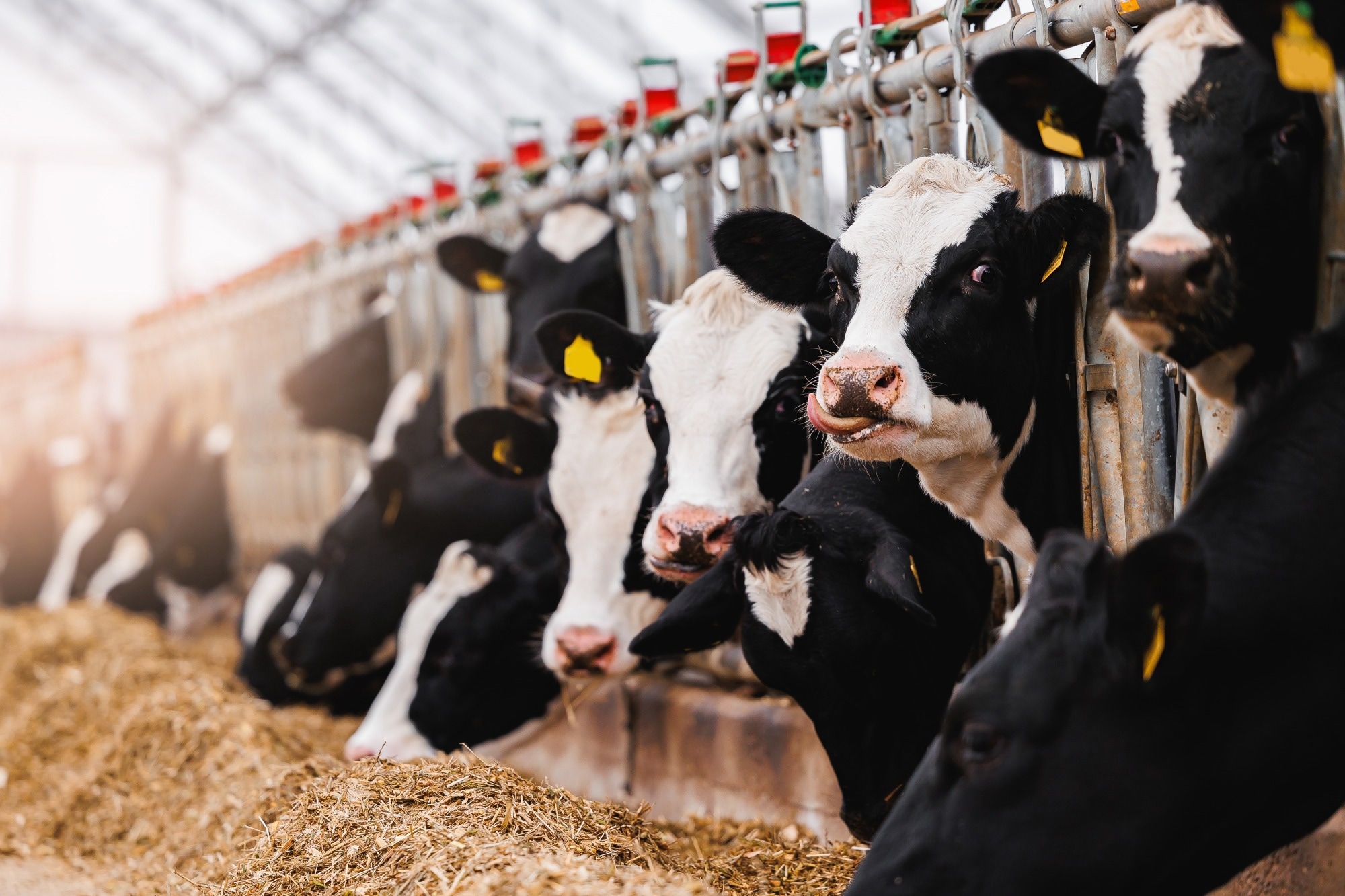Researchers discovered that the H5N1 bird flu virus can persist for up to 120 days in raw-milk cheese, challenging long-standing safety rules and raising new questions about the risks of unpasteurized dairy.
 Study: H5N1 influenza virus stability and transmission risk in raw milk and cheese. Image credit: Parilov/Shutterstock.com
Study: H5N1 influenza virus stability and transmission risk in raw milk and cheese. Image credit: Parilov/Shutterstock.com
A new study published in Nature Medicine reveals that highly pathogenic avian influenza virus can remain infectious for up to 120 days under certain pH conditions in raw-milk cheese produced from contaminated milk. This finding raises serious public health concerns, as contaminated raw-milk products can potentially increase human exposure to the virus.
Background
The highly pathogenic avian influenza (HPAI) H5N1 virus is a subtype of influenza A virus that predominantly affects wild birds globally. Recently, outbreaks of this virus have been detected in poultry and dairy cows in the U.S., with several human cases reported among dairy and poultry workers. Such spillover events (viral transmission from one species to another) raise serious public health concerns that require urgent attention and careful management.
Several studies have detected high levels of HPAI H5N1 virus in the milk from infected cows, highlighting the possibility of viral exposure to humans and other animals. Although it has been observed that various pasteurization processes can effectively inactivate the virus, there remains a risk of exposure through the intake of raw milk or raw-milk cheese, which is popular worldwide.
Researchers at Cornell University, USA, conducted a study to examine HPAI H5N1 virus stability during cheese production under different pH conditions, using raw milk spiked with the HPAI H5N1 virus. They also determined viral stability in company-made raw-milk cheeses unintentionally made with naturally contaminated milk. They further examined viral infectivity by feeding contaminated cheese to ferrets and monitoring whether infection occurred.
Key findings
The study reported that the HPAI H5N1 virus remains highly stable during the entire cheese production process and that the infectious virus persists for up to 120 days during the monitoring period.
The study tested three preprocessing milk acidification pH values: 6.6, 5.8, and 5.0. These values were selected based on the pH range encountered in raw-milk cheeses at the marketplace. Of these pH values, only pH 5.0 effectively inactivated the virus, leading to no detectable infectious virus in raw-milk cheese immediately after production and during the 120-day monitoring period.
This remarkable viral stability was observed in raw-milk cheese produced with HPAI H5N1 virus-spiked milk (experimental cheese) and milk from naturally infected cows (company-made cheese).
Influenza viruses are sensitive to an acidic environment, and this sensitivity is driven by pH-dependent conformational changes in the viral surface glycoprotein hemagglutinin, which triggers viral entry into host cells. In the cellular environment, a pH of 5.5 induces hemagglutinin conformational changes suitable for viral entry. However, if this conformational change occurs prematurely outside the cellular environment, the hemagglutinin protein loses its ability to bind to the host cell membrane and becomes inactive.
The current study reported that preprocessing milk acidification at pH 5.0 (and below 5.5) successfully inactivated the virus, strongly supporting the pH-mediated viral inactivation mechanism in the external environment.
Regarding infectivity, the study reported that ferrets consuming HPAI H5N1 virus-contaminated raw milk became infected. However, ferrets consuming contaminated cheese did not become infected, though the authors noted that the small sample size and possible differences in oral infection dose between solid and liquid matrices may have influenced this outcome.
Another potential reason is that ferrets are more likely to swallow small pieces of cheese without sustained chewing, which could limit viral contact and exposure to the oropharynx (the middle portion of the throat).
These findings support current epidemiological data linking animal and human cases of HPAI H5N1 infections with ingesting contaminated raw milk from infected cows. Further studies investigating species-specific differences in the expression and distribution of hemagglutinin-binding host cell receptors are needed to understand potential differences in oral susceptibility and the risk of foodborne influenza A infections.
No infection was detected in ferrets fed cheese suspension, which might be due to the lower infectious titers (about 1-2 logs lower) in these samples compared to spiked raw milk.
Given that the HPAI H5N1 virus remains stable in raw milk and raw-milk cheese for a long period of time, and that such persistent virus stability and continued circulation in dairy cattle could facilitate the emergence of new variants (such as genotype D1.1), it is essential to determine the minimum oral infectious dose of HPAI H5N1 virus in these products to assess the potential risk to human health accurately.
Study significance
The study findings highlight the potential public health risks of consuming raw-milk cheese from contaminated milk. Previous work by the same research group showed that the HPAI H5N1 virus can remain stable for up to 8 weeks (~56 days) in raw milk under refrigeration (4 °C).
In the U.S., the current regulation requires 60 days of monitoring of raw-milk cheese before marketing to ensure safety. However, the current study findings indicate that this monitoring window is insufficient to achieve HPAI H5N1 virus inactivation and guarantee cheese safety.
The study also highlights the need to investigate other raw milk products, such as yogurt and whey, for possible viral contamination and implement additional mitigation strategies for food safety.
The current study researchers have recently reported that heat treatment of raw milk at temperatures above 54 °C successfully inactivates the HPAI H5N1 virus within 15 minutes. Therefore, thermal treatment of raw milk can be considered an alternative safety measure for cheese production.
Download your PDF copy now!